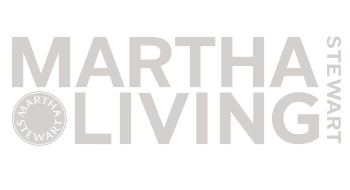Miette’s Vanilla Buttercream
makes about 6 cups, enough to frost two 6-inch cakes
“Bury me in buttercream,” I say, because this classic frosting is silky and luxurious and rich and light all at the same time. European buttercreams, delicious and excellent for decorating, start with a base of egg whites or yolks, whereas American-style buttercreams tend to be a simple mixture of butter and powdered sugar. Granted, American buttercream is very simple to make, but the results are lackluster at best and we don’t use them at Miette. European buttercreams provide a vastly superior texture and flavor and are worth the slightly nerve-wracking procedure. When I teach classes, I hear more cries of panic when making buttercream than any other task, because it is easy to “break”—that is, for it to separate into distinct masses of water and fat all of sudden—in the middle of the process. When you are making buttercream, it is important to have the ingredients at room temperature and to add the butter slowly so that it has a chance to become incorporated and emulsified. If your buttercream does separate, don’t give up. Usually you can remedy any “disaster” by increasing the speed of your mixer or by holding a torch to the side of the bowl. Buttercream must be served at room temperature, otherwise it is unpleasantly firm and you won’t experience its luxuriousness. Our Vanilla Buttercream is essentially a Meringue Buttercream made with egg whites that we then flavor to make many of our other varieties. Vanilla Buttercream looks pure white against a dark chocolate cake and accepts additional flavors, such as fruit juices, more readily, while keeping a smooth texture. It also has significantly less fat than French Buttercream, so it is able to hold up better in heat—a consideration for an outdoor event.
ingredients
2 CUPS (14 OUNCES) SUGAR
1/3 CUP WATER
5 LARGE EGG WHITES
1 TEASPOON CREAM OF TARTAR
3 CUPS (1½ POUNDS) UNSALTED BUTTER, AT ROOM TEMPERATURE
2 TABLESPOONS VANILLA EXTRACT
preparation
1. In a small saucepan over medium heat, combine the sugar and water. Clip a candy thermometer to the side of the pan. Cook the mixture until it reaches 248 degrees F, 5 to 10 minutes, keeping a constant eye on it.
2. Meanwhile, combine the egg whites and cream of tartar in the bowl of a stand mixer fitted with the whisk attachment. When the sugar syrup reaches 240 degrees F, whisk the egg whites on medium-low speed until soft peaks form. Slowly pour in the syrup, raise the speed to high, and whisk until soft peaks form.
3. When the sugar syrup reaches 248 degrees F, immediately pour into a heat-proof measurer. Reduce speed to low and very carefully drizzle the syrup into the mixer bowl, away from the whisk so the hot syrup doesn’t spatter. Be careful because the syrup is very hot. When you have added all of the syrup, raise the speed to high and beat until the mixture is cool to the touch (an instant-read thermometer should register 65 to 70 degrees F), 5 to 10 minutes.
4. Only when the meringue is cool enough should you begin adding the butter. Reduce the speed to medium. With the mixer running, drop in the butter, 1 tablespoon at a time, waiting until each is incorporated before adding another. The mixture may deflate and begin to look curdled. Raise the speed to high and continue to add tablespoon-size pieces of butter, making sure each is completely combined before adding more. When all of the butter has been added, the frosting should be smooth and thick. Add the vanilla and mix to combine.
5. Use the buttercream immediately, or cover and refrigerate until needed. Store in a zippered plastic bag for up to 1 week in the refrigerator and up to 2 months in the freezer. (To thaw, leave in the refrigerator overnight, not on the countertop.) To use buttercream that has been chilled, remove from the refrigerator and bring to room temperature, about 1 hour, or microwave in 15-second intervals, mixing in between each, until soft. If frosting has been frozen, this can take up to 2 minutes total. You can also soften the buttercream over a bain-marie or a double boiler. The frosting will soften from the outer edges of the bowl so mix from the outside, folding the frosting inside. Transfer to a stand mixer fitted with the paddle attachment and beat until soft and spreadable, 2 to 3 minutes.
RASPBERRY BUTTERCREAM
For each 1 cup of Vanilla Buttercream, stir in 3 tablespoons raspberry juice until well combined and smooth. To make raspberry juice, in a saucepan over medium-low heat, combine 2 cups fresh raspberries, 2 tablespoons water, and 1 tablespoon sugar. Cook, gently stirring the berries to help them break down, until the berries are liquefied, 10 to 15 minutes. Remove from the heat and strain into a heatproof bowl through a fine-mesh sieve. Let cool to room temperature before adding to the buttercream.
LEMON BUTTERCREAM
For each 1 cup of Vanilla Buttercream, stir in 3 tablespoons Lemon Curd until well combined and smooth.
PISTACHIO BUTTERCREAM
For each 1 cup of Vanilla Buttercream, stir in 2 tablespoons pistachio paste until well combined and smooth.
ROSE GERANIUM BUTTERCREAM
For each 1 cup of Vanilla Buttercream, stir in 2 drops rose geranium oil until well combined and smooth.
GRAPEFRUIT BUTTERCREAM
For each 1 cup of Vanilla Buttercream, stir in 1 tablespoon freshly squeezed grapefruit juice and 1 teaspoon grated grapefruit zest until well combined and smooth.











